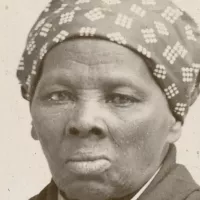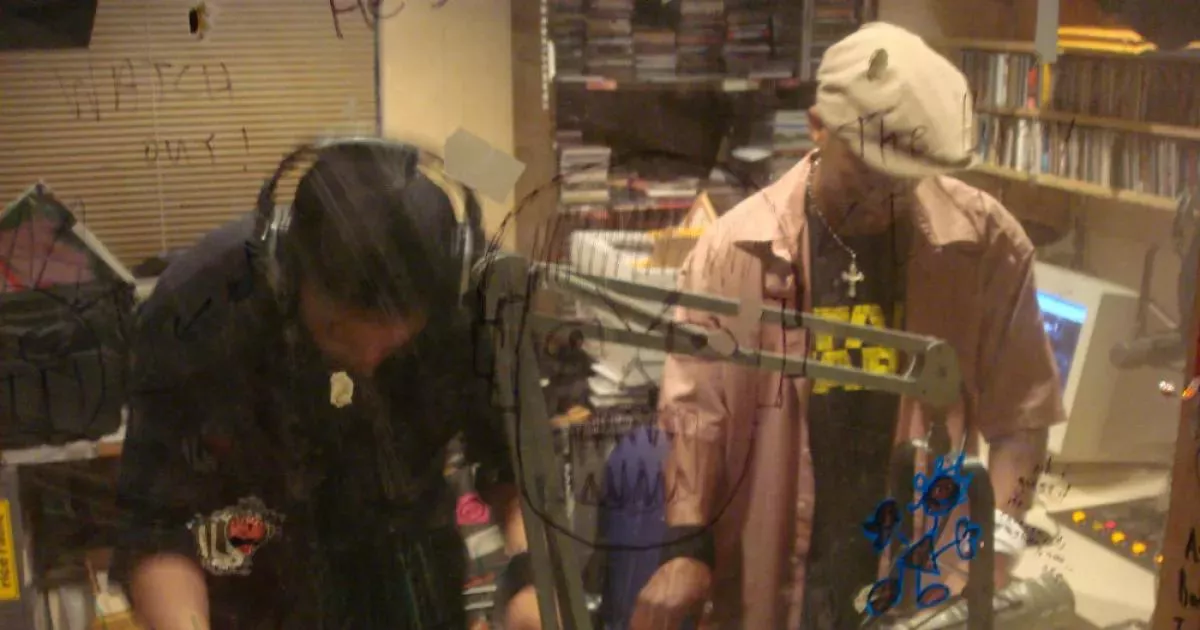Hip-hop, often called rap, emerged in the 1970s in the Bronx, New York, originating from African American and Afro-Caribbean communities. Initially promoting anti-drug and anti-violence messages through rhythmic music and rapping (rhythmic spoken poetry), hip-hop evolved into a diverse genre by the 21st century, encompassing various races and genders. Although rapping is a prominent element, hip-hop culture encompasses four key elements: MCing/rapping, DJing/scratching, breakdancing, and graffiti art. Therefore, "hip-hop" signifies the entire subculture, while "hip-hop music" can include other elements beyond rapping, such as DJing and beatboxing.
1935: DJ Nat D. Begins MCing at the Palace Theatre
In 1935, DJ Nat D. started working as the master of ceremonies at the Palace Theatre on Beale Street in Memphis, Tennessee, a crucial venue for aspiring musicians.
1946: "Noah" by The Jubalaires
The gospel group The Jubalaires released their song "Noah" in 1946, which is now often regarded as one of the first recorded instances of rap.
1947: DJ Nat D.'s Tenure at the Palace Theatre Ends
After a 12-year run, DJ Nat D.'s time as the MC at the Palace Theatre came to an end in 1947.
1949: DJ Nat D. Promotes Music on Radio
By 1949, DJ Nat D. was promoting music on the radio, exposing African American audiences to a wider range of sounds.
1953: Dr. Hep Cat's Rhymes Published
Dr. Hep Cat's influential rhymes were featured in "The Jives of Dr. Hepcat," a dictionary of jive talk, published in 1953.
1963: "I Am the Greatest"
Muhammad Ali, the famous boxer known for his rhythm and rhyme scheme when speaking, released his spoken-word album "I Am the Greatest" in 1963, now regarded as one of the earliest examples of hip hop.
1967: Emergence of Jamaican DJs and Early Talk-Over Records
The year 1967 marked the emergence of Jamaican DJs like Sir Lord Comic, who released "The Great Wuga Wuga." This period also saw early talk-over records by artists such as Prince Buster and Lee "Scratch" Perry, laying the groundwork for the development of rap.
1968: "Here Comes the Judge"
Pigmeat Markham, a musical comedian, released his single "Here Comes the Judge" in 1968, often regarded as one of the earliest hip hop records.
1969: First Full-Length Jamaican DJ Record
U-Roy and Peter Tosh released "Righteous Ruler" in 1969, marking the first full-length Jamaican DJ record, a significant milestone in the evolution of rap music.
1970: Early Lyrical Styles Emerge
In the early 1970s, hip hop's lyrical style often revolved around boasts and simple chants, reflecting the genre's nascent stage.
1970: The Last Poets Debut Album
The Last Poets, a group known for their politically charged spoken-word poetry, released their debut album in 1970.
1971: "The Revolution Will Not Be Televised"
Gil Scott-Heron, a poet and musician, gained a wide audience with his 1971 track "The Revolution Will Not Be Televised," known for its politically charged content and unique spoken-word style.
1971: Johnny Lover Remixes Bob Marley and the Wailers
In 1971, Johnny Lover further developed the concept of remixing by creating versions of songs by Bob Marley and the Wailers.
1971: Philadelphia: "Graffiti Capital of the World"
The New York Times recognized Philadelphia's significant influence on the burgeoning graffiti art movement in 1971, dubbing it the "Graffiti Capital of the World".
August 11, 1973: The Birth of Breaking
On August 11, 1973, at his sister's back-to-school party, DJ Kool Herc extended the beat of a record by using two record players, isolating the percussion "breaks" by using a mixer to switch between the two records. This is widely considered the birth of breaking, or "scratching".
1973: DJ Kool Herc Brings Jamaican Sound System Culture to the Bronx
DJ Kool Herc's move to the Bronx in 1973 proved pivotal, as he brought with him Jamaica's sound system culture, a foundational element of hip hop.
1976: Dillinger's International Rap Hit
Dillinger achieved the first international rap hit with "Cocaine in my Brain" in 1976, demonstrating the growing global appeal of the genre.
1977: DJ Disco Wiz Creates the First Hip Hop "Mixed Plate"
Puerto Rican DJ Disco Wiz made history in 1977 by creating the first hip hop "mixed plate," a precursor to the modern mixtape, using sound bites, special effects, and manipulated beats.
1977: The 1977 New York City Blackout
The New York City blackout of 1977 saw widespread looting, arson, and other citywide disorders especially in the Bronx where a number of looters stole DJ equipment from electronics stores. This resulted in more people having access to turntables, and thus the hip hop genre grew at an astounding rate from 1977 onward.
February 1979: "Hip Hop" In Print
The term "hip hop" was first used in print to refer to the music by reporter Robert Flipping Jr. in a February 1979 article in the New Pittsburgh Courier
March 1979: Release of "King Tim III (Personality Jock)"
The Fatback Band released "King Tim III (Personality Jock)" in March 1979, a track considered by some to be a contender for the first hip hop record.
1979: Break-beat Deejaying
By 1979, DJ Kool Herc helped popularize and refine a new style of Deejaying known as break-beat deejaying, where the breaks of funk songs—the part most suited to dance, usually percussion-based—were isolated and repeated for the purpose of all-night dance parties. This form of music playback, using hard funk and rock, formed the basis of hip hop music.
1979: DJ Lady B Releases "To the Beat Y'all"
DJ Lady B, a Philadelphia native, made history in 1979 by releasing "To the Beat Y'all", becoming the first female solo hip hop artist to record music.
1979: Disco's Influence and Backlash
Hip hop in 1979 grappled with the influence of disco, utilizing its instrumental loops while also reacting against the mainstream disco sound. This interplay shaped the genre's early development.
1979: "Funk You Up" Release and Early Hip Hop Expansion
In 1979, "Funk You Up" by The Sequence, a female hip hop group, was released. This period marked the genre's growth beyond New York City to other urban centers across the US.
1979: Hip Hop's Public Debut
In 1979, largely due to the end of the decade and easing economic tensions which allowed for more public exposure, hip hop music was finally able to debut on radio and television after existing solely in house parties and block parties.
1979: Blondie Discovers Hip Hop
In late 1979, Debbie Harry of Blondie took Nile Rodgers of Chic to a hip hop event, as the main backing track used was the break from Chic's "Good Times" which inspired her to include a rap in their next single.
1979: "Rapper's Delight" Popularizes Hip Hop
The Sugarhill Gang released "Rapper's Delight" in 1979, sampling Chic's "Good Times." This track is widely credited with popularizing rap music globally.
1980: Roland TR-808 Drum Machine Released
The Roland Corporation's release of the TR-808 Rhythm Composer in 1980 provided musicians with a groundbreaking tool for crafting rhythms, significantly impacting electronic, dance, and particularly, hip hop music.
1981: Grandmaster Flash's Sampling Innovation
Grandmaster Flash's "The Adventures of Grandmaster Flash on the Wheels of Steel" (1981) demonstrated innovative sampling techniques using only sampled tracks, pushing creative boundaries in hip hop.
1981: "Rapture" Hits Number One
In 1981, Blondie's single "Rapture" became the first song containing hip hop elements to hit number one on the U.S. Billboard Hot 100.
1981: Rise of Independent Labels and Early Hip Hop Influences
In 1981, independent record labels like Tommy Boy, Prism Records, and Profile Records gained traction, releasing electro and rap records that fueled the burgeoning hip hop movement. This era saw the emergence of influential artists such as Cybotron, Hashim, Afrika Bambaataa, Planet Patrol, Newcleus, and Warp 9.
1981: The Mean Machine's Debut
The Mean Machine, a prominent group reflecting the connection between hip hop and the Hispanic community, recorded their first song under the label "Disco Dreams" in 1981.
1981: Funky Four Plus One Performs on Saturday Night Live
The hip hop group Funky Four Plus One showcased the collaborative nature of early hip hop with their performance on Saturday Night Live in 1981.
January 1982: "Hip Hop" In Interview
The term "hip hop" was used to refer to the culture in a January 1982 interview of Afrika Bambaataa by Michael Holman in the East Village Eye.
1982: Kid Frost Emerges in Los Angeles
Adding to the burgeoning Hispanic hip hop scene, Kid Frost from Los Angeles embarked on his musical career in 1982.
1982: Afrika Bambaataa's "Planet Rock" and the Rise of Electro
Afrika Bambaataa's 1982 release "Planet Rock" blended electronic elements, influencing the emergence of electro music, a significant trend in hip hop and electronic dance music.
1982: Electro Sound Dominates
By 1982, the electronic (electro) sound, influenced by artists like Warp 9, was trending in hip hop, signaling a shift in the genre's sound.
1982: "The Message" Pioneers Conscious Rap
Grandmaster Flash and the Furious Five released "The Message" in 1982, a groundbreaking track widely recognized for pioneering conscious rap and marking a shift toward lyrical depth and social commentary in hip hop.
1982: Afrika Bambaataa's Global Impact with "Planet Rock"
In 1982, Afrika Bambaataa released "Planet Rock," a groundbreaking track that introduced hip hop to a global audience, further solidifying the genre's growing influence.
1982: Grandmaster Flash's "The Message"
In 1982, Grandmaster Flash and the Furious Five released "The Message," a groundbreaking track that brought social commentary to the forefront of hip hop. The song's powerful lyrics about poverty, inequality, and urban life challenged the genre's lighthearted image and earned critical acclaim.
1982: Diversification of Hip Hop Sound
The year 1982 saw hip hop diversify with the emergence of new sounds, evident in tracks like Afrika Bambaataa's "Planet Rock" and Warp 9's "Nunk," blending electro and hip hop.
1983: Electro Music Expands with Key Releases
Electro music continued to permeate the music scene in 1983 with notable releases like "Let the Music Play" by Shannon, "I.O.U." by Freeez, "Freak-a-Zoid" by Midnight Star, solidifying its presence in hip hop.
1983: Experimental Sounds and Social Commentary
Rammellzee & K-Rob's "Beat Bop" in 1983 showcased a 'slow jam' style with dub influences, while Warp 9's "Light Years Away" introduced social commentary through a science fiction lens.
1983: The Rise of New School Hip Hop
The year 1983 marked the emergence of the new school of hip hop, spearheaded by artists like Run-D.M.C. and LL Cool J. This wave brought a distinct shift with its drum machine-driven minimalism, rock music influences, and aggressive lyrical style.
1984: International Spread of B-boying and French Hip Hop's Emergence
By 1984, b-boying had reached Japan, Australia, and South Africa, showcasing the global reach of hip hop culture. In France, Sidney became the first black TV presenter with his show "H.I.P. H.O.P." on TF1, marking a significant milestone for the genre's visibility.
1984: Electro Music Gains Momentum
Cerrone's "Club Underworld" was released in 1984, further fueling the electro music trend within the hip hop scene.
1984: A History of Hip Hop
In 1984 that Steven Hager, wrote a book about the history of hip hop after first using the term in an interview with Afrika Bambaataa in The Village Voice.
1984: Schoolly D Pioneers Gangsta Rap
Originating from Philadelphia, Schoolly D emerged in 1984, pioneering a distinct style of hip hop that would later be recognized as gangsta rap.
1984: Run-DMC's "It's Like That"
Run-DMC's 1984 hit "It's Like That" further solidified hip hop's growing influence and artistic credibility. The song's hard-hitting beats and socially conscious lyrics resonated with a wide audience, contributing to the genre's increasing visibility and impact.
1985: Schoolly D Pioneers Gangsta Rap
Schoolly D released "P.S.K. What Does It Mean?" in 1985, a track widely considered a pioneering force in the emergence of gangsta rap, a subgenre reflecting the realities of inner-city life.
May 1986: Run-DMC's "Raising Hell" Ignites Hip Hop's Album Era
The release of Run-DMC's "Raising Hell" in May 1986 marked a pivotal moment, selling over three million copies and ushering in hip hop's "album era." This period saw albums gaining critical recognition and becoming the standard by which the genre's greats were judged.
1986: Commercial Breakthrough of Hip Hop and the Beastie Boys' Success
By 1986, new school hip hop achieved mainstream success, marked by the Beastie Boys' album "Licensed to Ill" becoming the first rap album to top the Billboard charts. This era solidified the hip hop album's place in mainstream music.
1986: Ice-T's "6 in the Mornin'" Solidifies Gangsta Rap
Following Schoolly D's lead, Ice-T released "6 in the Mornin'" in 1986, further solidifying the presence and influence of gangsta rap within the hip hop landscape.
1987: A Year of Landmark Albums
Following the success of "Raising Hell," 1987 witnessed a wave of influential albums that solidified hip hop's critical and commercial success. These included Boogie Down Productions' "Criminal Minded," Public Enemy's "Yo! Bum Rush the Show," and Eric B. & Rakim's "Paid in Full."
1988: Formation of Cypress Hill
Cypress Hill, a renowned multicultural hip hop group, was formed in 1988 in South Gate, California, highlighting the growing diversity and influence within the genre.
1988: N.W.A's "Straight Outta Compton" and the Rise of West Coast Hip Hop
N.W.A released their groundbreaking album "Straight Outta Compton" in 1988, solidifying West Coast hip hop as a dominant force and sparking controversy with their raw, confrontational lyrics, particularly in the song "Fuck tha Police."
1989: Advancements in Sampling Technology and DJ Mark James
DJ Mark James, as "45 King," released "The 900 Number" in 1989, showcasing advanced sampling techniques by merging samplers and vinyl records, reflecting a growing trend in music production.
1989: Public Enemy's "Fight the Power"
In 1989, Public Enemy released the single "Fight the Power," a powerful and politically charged anthem that resonated with audiences and further propelled hip hop into the spotlight. The song's impact on both music and culture solidified Public Enemy's status as a leading voice in hip hop and contributed to the genre's growing recognition.
1990: Hip Hop's Breakthrough Year
1990 was a pivotal year for hip hop music, marked by its mainstream emergence and commercial success. Public Enemy's album "Fear of a Black Planet" received critical acclaim and achieved significant sales, contributing to the genre's growing popularity. Music critics and journalists recognized the cultural impact of hip hop, with Billboard editor Paul Grein calling 1990 "the year that rap exploded." The influence of Public Enemy's single "Fight the Power," Tone Lōc's chart-topping hit "Wild Thing," and the prevalence of hip hop songs on the Billboard Hot 100 solidified its presence in the music industry.
1990: Hip Hop's Evolution and Growth
By 1990, hip hop had evolved significantly from its early days as a novelty genre. Artists like Public Enemy and N.W.A garnered significant attention, showcasing the genre's expanding creativity and lyrical depth. This period marked a turning point in the perception of hip hop, shifting from a passing trend to a powerful and influential force in music.
1990: MC Hammer's Mainstream Success and Vanilla Ice's Chart-Topping Hit
In 1990, MC Hammer achieved mainstream success with his album "Please Hammer, Don't Hurt 'Em," which reached number one on the charts and featured the hit single "U Can't Touch This." The album's popularity brought hip hop to new heights, becoming one of the genre's best-selling albums. That same year, Vanilla Ice's "Ice Ice Baby" became the first hip hop single to top the Billboard charts, introducing the genre to a wider audience and contributing to its diversification.
1990: The Geto Boys Release "The Geto Boys"
The Geto Boys, after the success of their previous album, released "The Geto Boys" in 1990. This album, produced by Rick Rubin, further solidified their place in the emerging Southern rap scene.
1991: The East Coast–West Coast Rivalry Begins
The East Coast–West Coast hip hop rivalry emerged in 1991, fueled by tensions between artists and fans from the two regions. This rivalry, primarily centered around the Notorious B.I.G. and Tupac Shakur, reflected a deeper competition for recognition, media attention, and dominance within the hip hop world.
1991: The Geto Boys Release "We Can't Be Stopped"
The Geto Boys continued their streak of success with the release of "We Can't Be Stopped" in 1991. This album further cemented their influence on the Southern rap sound and helped pave the way for other artists from the region.
1992: Arrested Development Releases "3 Years, 5 Months and 2 Days in the Life Of..."
Atlanta-based hip hop group Arrested Development released their album "3 Years, 5 Months and 2 Days in the Life Of..." in 1992. This album, critically acclaimed for its unique sound, played a crucial role in expanding the reach of Southern hip hop and bringing it closer to the mainstream.
1992: Dr. Dre's "The Chronic" and the Rise of G Funk
Dr. Dre's 1992 album "The Chronic" marked a significant moment in hip hop, establishing West Coast gangsta rap as a commercially successful subgenre. The album introduced G Funk, a style that would heavily influence the West Coast sound and later dominate the hip hop scene.
1992: Dr. Dre Releases "The Chronic" and Pioneered G-Funk
In 1992, following the disbandment of N.W.A., Dr. Dre released his groundbreaking album "The Chronic." This album marked a significant turning point in hip-hop, introducing the world to G-funk, a style characterized by smooth funk beats and laid-back lyrics. "The Chronic" achieved mainstream success, reaching the top of the R&B/hip hop charts and solidifying Dr. Dre's influence on the West Coast rap scene.
1993: Digable Planets Release "Reachin' (A New Refutation of Time and Space)"
In 1993, Digable Planets released "Reachin' (A New Refutation of Time and Space)", an album that would significantly influence jazz rap. The album sampled jazz legends like Don Cherry and Herbie Hancock and featured the hit single "Rebirth of Slick (Cool Like Dat)", reaching No. 16 on the Billboard Hot 100.
1993: The Digable Planets' Grammy Win
In 1993, The Digable Planets, known for their unique contributions to the golden age of hip hop, won a Grammy award, further solidifying the genre's critical acclaim and artistic innovation during this period.
1993: Wu-Tang Clan Revitalizes East Coast Hip Hop
In 1993, the Wu-Tang Clan released their debut album "Enter the Wu-Tang (36 Chambers)", injecting new energy into the East Coast hip hop scene. The album's raw energy, unique style, and hardcore lyrics presented a powerful counterpart to the West Coast sound, shifting the balance of power in hip hop.
1993: Snoop Dogg's "Doggystyle" and the Continued Rise of G Funk
Snoop Dogg's 1993 album "Doggystyle" further popularized the G Funk sound pioneered by Dr. Dre, solidifying its influence on West Coast hip hop. The album's success contributed to the growing popularity of G Funk and its impact on the overall sound of hip hop during this era.
1994: East Coast Hip Hop Reaffirms its Status
1994 marked a pivotal year for East Coast hip hop as artists like Nas and Notorious B.I.G. released critically acclaimed albums that achieved both commercial success and widespread recognition. These albums helped solidify the East Coast's standing in the genre, even amidst the dominance of the West Coast sound.
1994: Heightened Tensions in the East Coast–West Coast Rivalry
The East Coast–West Coast rivalry intensified in 1994, fueled by escalating tensions between artists from both coasts. This period witnessed a surge in diss tracks, media scrutiny, and public feuds, further fueling the rivalry.
1995: Goodie Mob Releases "Soul Food"
Another Atlanta-based group, Goodie Mob, released their album "Soul Food" in 1995. This critically acclaimed album further solidified Atlanta's position as a major hub for hip hop innovation and contributed to the growing popularity of Southern hip hop.
1995: Annual Cuban Hip Hop Concert Begins
Beginning in 1995, an annual Cuban hip hop concert held in Havana played a significant role in popularizing the genre within Cuba.
1995: Mobb Deep's "The Infamous"
Mobb Deep released their album "The Infamous" in 1995, showcasing a darker and more hardcore style influenced by the Wu-Tang Clan's production techniques. The album solidified Mobb Deep's place in the East Coast hardcore scene and further diversified the sounds of East Coast hip hop.
1996: Jay-Z's "Reasonable Doubt"
Jay-Z's debut album, "Reasonable Doubt," was released in 1996, further contributing to the East Coast's resurgence. The album showcased Jay-Z's lyrical prowess and distinctive flow, solidifying his place within the East Coast hip hop scene.
1996: Mobb Deep's "Hell on Earth"
Mobb Deep's 1996 album "Hell on Earth" continued to push the boundaries of East Coast hardcore rap, building upon the sound they established with "The Infamous." The album further cemented Mobb Deep's reputation for gritty lyricism and raw beats.
1996: OutKast Releases "ATLiens"
OutKast, also from Atlanta, released their album "ATLiens" in 1996. This album garnered widespread critical acclaim and further broadened the horizons of Southern hip hop. It solidified OutKast's unique style and cemented their place as pioneers in the genre.
1996: Tupac Shakur's Death
The hip hop world was shaken in 1996 by the death of Tupac Shakur, a pivotal figure in the East Coast–West Coast rivalry. His unsolved murder sent shockwaves through the industry and had a profound impact on the direction of hip hop.
1997: Sean "Puff Daddy" Combs Releases "No Way Out"
Sean "Puff Daddy" Combs released his highly successful album "No Way Out" in 1997, marking a significant shift in the sound of gangsta rap and mainstream hip hop. Combs's Bad Boy Records played a key role in this transition, incorporating R&B elements, materialistic themes, and samples from classic soul and pop music into the genre.
1997: Tragic End to the East Coast–West Coast Rivalry
The East Coast–West Coast rivalry reached a tragic end in 1997 with the fatal shooting of the Notorious B.I.G. His death, following the unsolved murder of Tupac Shakur in 1996, marked a dark period in hip hop history and brought an end to one of the most intense rivalries in music.
1998: Sampling in Hip Hop
The use of sampling, a key element in early hip hop, was notably prevalent in albums like Gang Starr's "Moment of Truth" in 1998.
1999: Hip Hop Dominates the Music Industry
By 1999, hip hop had reached unprecedented levels of success, becoming the top-selling music genre with 81 million CDs sold. The genre's influence extended across the music industry, with many American pop songs incorporating hip hop elements. The late 1990s saw the rise of influential acts like the Wu-Tang Clan, Diddy, and the Fugees, further solidifying hip hop's dominance and impact on popular culture.
1999: Hip Hop Becomes a Chart-topper
By 1999, thanks to its wide variety of styles appealing to a diverse range of fans and artists, hip hop became the top-selling music genre worldwide.
1999: Dr. Dre's Comeback with "2001"
Dr. Dre made a significant comeback in 1999 with his album "2001." This album solidified his lasting influence on hip hop and showcased his continued relevance in the ever-evolving music scene.
1999: Eminem's Breakthrough with "The Slim Shady LP"
Eminem, a white rapper, achieved unexpected mainstream success in 1999 with his album "The Slim Shady LP." This album, certified platinum, challenged the established norms of hip hop and broadened the genre's appeal.
2000: Peak of Hip Hop Sales
By 2000, rap music had reached a high point in sales, accounting for a considerable portion of all music sales.
2000: Dr. Dre Produces Eminem's "The Marshall Mathers LP"
In 2000, Dr. Dre further cemented his role as a hip hop powerhouse by producing Eminem's critically acclaimed album "The Marshall Mathers LP." This collaboration highlighted Dre's ability to nurture and guide significant talent within the industry.
2001: Dr. Dre Releases "2001"
Dr. Dre released his highly anticipated album "2001," further solidifying his place as a hip hop icon. This album, released in 2001, showcased his production prowess and his ability to consistently deliver groundbreaking music.
March 2002: Nas Reflects on the 1994 East Coast Renaissance
In a March 2002 issue of The Source Magazine, rapper Nas reflected on the state of East Coast hip hop in 1994, calling it a "renaissance" for the region's scene. This period saw the release of acclaimed albums like Nas's own "Illmatic" and Notorious B.I.G.'s "Ready to Die," solidifying the East Coast's position during a time of West Coast dominance.
2003: Dr. Dre Produces 50 Cent's "Get Rich or Die Tryin'"
Dr. Dre continued his streak of success in 2003 by producing 50 Cent's debut album "Get Rich or Die Tryin'." The album's immediate success, debuting at number one on the Billboard 200, highlighted Dre's Midas touch and his ability to identify and cultivate successful artists.
2003: OutKast Releases the Critically Acclaimed "Speakerboxxx/The Love Below"
OutKast released their groundbreaking double album "Speakerboxxx/The Love Below" in 2003. This album received widespread critical acclaim for its genre-bending sound, incorporating elements of rap, rock, R&B, and more. It achieved both commercial and critical success, winning a Grammy Award for Album of the Year and becoming one of the best-selling hip hop albums of all time.
2005: Decline of Hip Hop Sales Begins
In 2005, sales of hip hop music in the U.S. began declining significantly, prompting discussions about the genre's future.
2006: No Rap Albums in Top 10 Sellers
Significantly, 2006 marked the first time in five years that no rap albums ranked among the top 10 best-selling albums, highlighting a shift in the music industry.
2007: Criticism of Lyrical Quality
The release of Soulja Boy's debut album in 2007, which received negative reviews, contributed to discussions about the perceived decline in lyrical quality within hip hop.
2008: Rise of Digital Music Consumption
By 2008, the rise of digital music consumption, including illegal downloads, became a prominent factor in the decline of physical album sales, impacting artists like Flo Rida.
2008: The Emergence of Wonky Hip Hop
The year 2008 saw the rise of wonky, a subgenre of hip hop characterized by its glitchy, melodic sound. Influenced by glitch hop and dubstep, wonky gained traction in the United States, United Kingdom, and internationally, particularly among artists associated with the Hyperdub music label.
2009: Hip Hop Maintains Popularity Despite Sales Decline
Despite the overall decline in record sales across the music industry, hip hop remained a popular genre in 2009, with artists like Eminem and the Black Eyed Peas achieving Billboard chart success.
2009: Global Recognition of Alternative Hip Hop
In 2009, the alternative hip hop movement gained significant global recognition, with artists like K'naan, Shing02, and M.I.A. achieving international acclaim.
July 17, 2017: Hip Hop/R&B Becomes Most Consumed Genre
On July 17, 2017, Forbes reported a significant milestone: hip hop/R&B surpassed rock to become the most consumed musical genre in the United States.
2017: Hip Hop Surpasses Rock
In 2017, for the first time in history, hip hop officially became the most popular genre in the United States, surpassing rock music which had dominated the charts for decades prior.
2017: Streaming's Impact on Music Industry and Awards
The rise of streaming platforms in the mid-late 2010s significantly impacted the music industry, exemplified by Chance the Rapper's "Coloring Book" winning Best Rap Album at the 2017 Grammy Awards, the first streaming album to do so.
2018: XXXTentacion's Streaming Success
XXXTentacion's second album, "?", released in 2018, achieved remarkable streaming success, becoming the most streamed rap album of all time on Spotify.
2020: Reclaiming Hip Hop
In a 2020 interview, DJ Kool Herc spoke on his desire for Jamaica to reclaim Hip Hop due to the heavy influence Jamaican musical styles had on the genre, which was created when Herc immigrated to the United States.
Mentioned in this timeline

Eminem also known as Marshall Mathers III is a highly...

XXXTentacion born Jahseh Dwayne Ricardo Onfroy was a controversial yet...

Cordozar Calvin Broadus Jr known as Snoop Dogg is a...

Doja Cat born Amala Ratna Zandile Dlamini is an American...

Jay-Z born Shawn Corey Carter is a highly influential American...

Tupac Shakur also known as Pac and Makaveli was a...
Trending
8 days ago Anthropic CEO to testify on Chinese AI cyberattack; Chatbots becoming criminals.
11 days ago Exploring David Simon's The Wire: A Masterpiece of Television and Social Commentary
8 days ago Google's AI Comeback: Benioff Switches to Gemini 3, OpenAI Feels the Pressure.

2 months ago Miles Teller Returns to Host SNL; Nikki Glaser & Glen Powell Debut

Damini Ebunoluwa Ogulu known as Burna Boy is a Nigerian singer songwriter and record producer He achieved fame in with...

3 days ago Caitlin Clark's soaring earnings: $114K WNBA salary, $16M sponsors despite injury in 2025.
Popular
Matt and Ross Duffer known as the Duffer Brothers are...
Aftyn Alyssa Behn is an American politician currently serving as...

Candace Owens is an American conservative political commentator and author...

XXXTentacion born Jahseh Dwayne Ricardo Onfroy was a controversial yet...

Ilhan Omar is an American politician currently serving as the...

Harriet Tubman was a pivotal American abolitionist and social activist...
